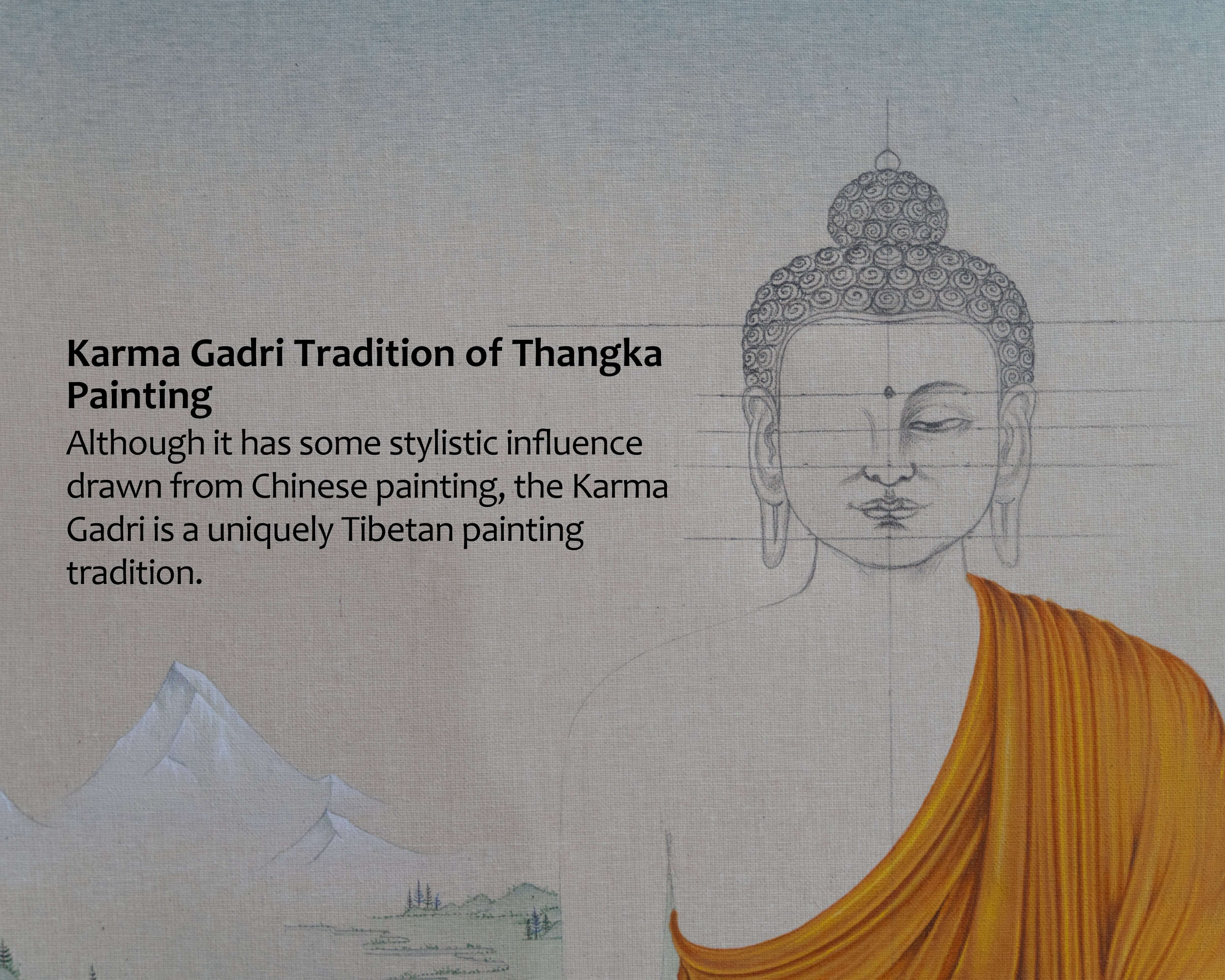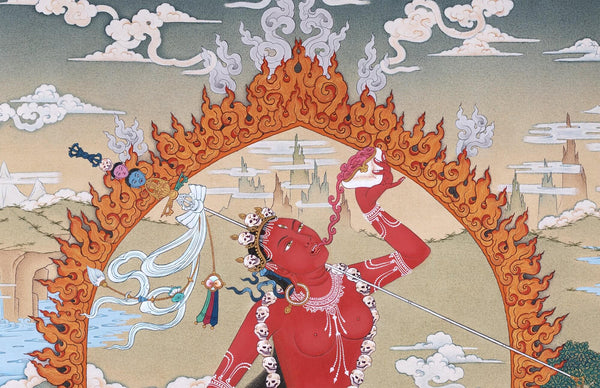Karma Gadri Tradition: An introduction
This Tradition of Tibetan thangka painting originated from the artistic experimentations of the 8th Karmapa, Mikyö Dorje (1507–1554). He was one of the most renowned Karmapas, a great meditation master as well as a prolific, and learner. Passionate about the arts and himself an artistic visionary. He always encouraged his disciples to learn painting and rejoiced in this activity.
The name Karma Gadri (gar-bris) came from the Karmapa encampments (gar: means "encampment").
It was set up when Mikyö Dorje and his entourage had to travel. He authored the great book on art entitled "the Great Sun Art Manual". It was very helpful for future artists.
So, Why is Thangka a Sacred Art?
Those who initiated and adopted the traditions realize and learned Buddhist masters. So anyone who would like to train in this tradition should understand. It is not appropriate to change the traditions according to their fancy. If artists follow the traditions as outlined, no major mistakes will be made.
The Chinese Influence in Karma Gadri Art
Karma Gadri Thangka Masters
Menla Dondrup:
This tradition originates from Menla Döndrup, the founder of Menri. We must follow the criteria set up by him. He was the first Tibetan artist to outline a unique Tibetan tradition.
As an incarnation of Manjushri, he was the first to compile the supreme art teachings. Translated into Tibetan from the original Indian Buddhist texts. As he translated them into Tibetan, his work is hail as the beginning of Tibetan art. Hence, any artist from Tibetan art traditions must acknowledge the source of his or her lineage.Mentangpa:
He himself drew from Nepalese and Indian traditions while developing his style as something unique. It is the same as saying that all four schools of Tibetan Buddhism are different. Even though, they are derived from Buddha Shakyamuni.
Hence, all Tibetan traditions of Thangka paintings originate from Menla Döndrup. He should be appreciated. Although they follow the guidelines and measurements of the Indian Buddhist texts exactly, they are uniquely Tibetan tradition.
The Great Three Tashi:
1. Yardo Tulku Namkha Tashi:This tradition was further expanded in the late 1600 or early 1700s. Yardo Tulku Namkha Tashi further, experimented with this tradition of thangka painting. He was considered to be a manifestation of the 8th Karmapa as his art emanation. Born in Yardo, he followed many teachers and became very learned in the five sciences. He went to E regions and studied with Queen Wencheng's emanation. Könchok Pende(named), who taught him the style of the Old Menri tradition.
Zhamar Könchok Yenlak and Gyaltsap Drakpa Döndrup also gave him the idea. To change the landscape features in his paintings to a Chinese style. But he kept the deities' bodies exactly as he had learned from the Old Menri tradition. Thus he founded the Karma Gadri lineage, which continues to this day.
2. Chö Tashi: A great artist who studied and propagated the Karma Gadri tradition.
Other Famed Tibetan Thangka Masters:
Dakpo Gopai Zhalngo:
10th Karmapa, Choying Dorje
Situ Panchen, Chökyi Jungne (1700-1774):
The 8th Tai Situ Rinpoche, was born in Derge in eastern Tibet. One of the greatest masters of the Kagyu school, he was the famous artist of Karma Gadri style. At 5, he already knew how to read and write. At the age of seven, he was given the name Situ Chökyi Jungne by the 8th Zhamarpa. He studied the five sciences under the tutelage of Deumar Geshe Tenzin Puntsok. He became one of the most famous and learned masters of the Karma Kagyu lineage. His name resounding as far as China, India, Nepal, and Mongolia.
In 1727 he started to build Palpung Monastery. Once it completed, he designed and oversaw all the interior murals. He wrote thirteen books, many on astrology and medicine, and notably commissioned. He painted many thangka, improving the Karma Gadri lineage and making it renowned in the world.
He painted about 40 thangka depicting the tales of the past lives of Buddha Shakyamuni, as well as the Karma Kagyu lineage masters.
These thangka and his other artworks in the Karma Gadri style are famous around the world, as some of the greatest artworks this lineage has produced.
Source: Art of Awakening


